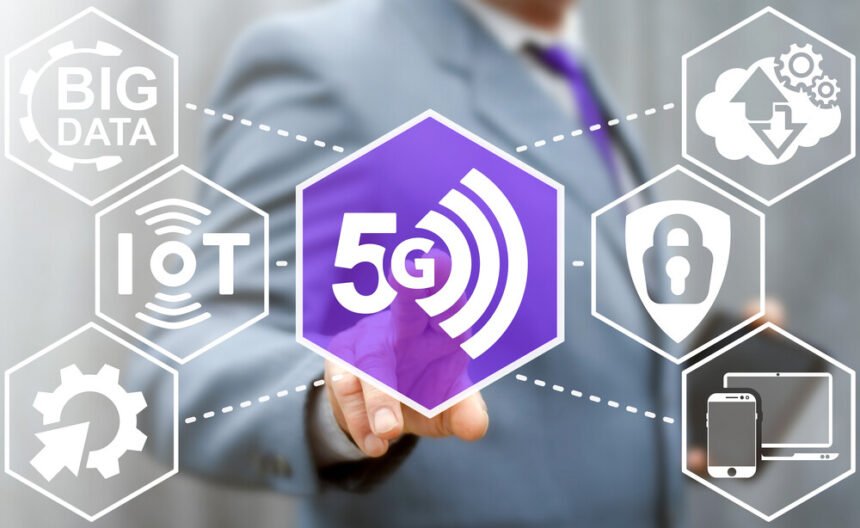Have you noticed how often the phrase “by the year 2020” comes up? In the tech sphere, many are heralding 2020 as the mile marker for various innovations. One central game-changer in this respect is 5G.
5G is the fifth generation network that will deliver data transfer speeds far faster than you’re used to, with lower latency that will actually make “real-time” close to a reality. By that, I mean when you’re watching a game “in real-time” through 5G, the delay between live action and what you see will be around 1 to 10 milliseconds. It’ll be pretty much impossible to tell the difference between live action and streaming data. 2020 is the magic number for when this should happen.
5G in 2020?
Just do a quick search, such as, “when will 5G be available” and you’ll see what I’m talking about. The majority of the news predicts that 2020 is the year when necessary infrastructure will officially be in place.
However, CNET reports that a “standards body” has a version of 5G called 5G New Radio slated to go up in 2019. The standards body consists of tech companies including Qualcomm, AT&T, Intel, Sprint, and T-Mobile. Noticeably missing from that list is Verizon. The carrier is trying to jump ahead by offering customers in 11 cities a taste of 5G that isn’t 5G at all—it’s a form of wireless broadband.
T-Mobile, which competes heavily with Verizon, offers Wi-Fi calling that turns every Wi-Fi connection into a cellphone tower. This is a concept similar to 5G, because 5G does away with distant cell towers as the primary data transmission points. Instead of towers, we’ll see a network of localized cells equipped with 5G chips. The difference between Wi-Fi calling and 5G is Wi-Fi runs on a lower frequency, transmitting radio waves at a slower rate than 5G. While Wi-Fi operates at 2.4 to 5 Ghz per second, 5G promises to operate at anywhere from 30 to 300 Ghz per second.
5G and Consumer Data
Both Verizon and T-Mobile are making claims to the most progressive 5G advancements, and indeed both want to be the first to advance because of the amount of money on the table. While consumers want faster speeds, which will generate more customer data, companies are learning how to monetize consumer data. There are several important things to note about 5G and data:
- When 5G becomes active, each carrier will be on an equal playing field in terms of providing customers with access to the network
- The carrier best able to market itself as the most innovative, with the most benefits to customers, will retain the most customers
- Only carriers that understand how to best take advantage of huge volumes of customer data will see an advantage in the 5G race
If you’re a telecom company, there are numerous issues when it comes to data and customer behavior analysis. The winner of the 5G race will dominate at solving these problems, which include:
- A glut of data creates correlation problems—correspondences between data sets that seem significant but actually aren’t
- It’s extremely hard to analyze huge amounts of data effectively
- It’s tough to come away with actionable insights that benefit both customer and company
There are several directions telecom companies could take to handle the influx of data that will come with 5G.
Software Solutions to Data Influx
In order to make decisions with customer data, telecoms could increasingly turn to AI and software solutions such as Net Promoter’s Satmetrix, as well as Mulesoft ESB. Satmetrix does the day-to-day iterative task of tracking customer experience and actions, while Mulesoft provides more of a big picture view, connecting customer behavior data with internal company data and other disparate data points.
But 48 percent of enterprise executives are expanding their customized app budgets, and 42 percent are planning on developing a new custom app to solve data problems. Telecom companies will have big incentives to develop their own analytics apps. If they know exactly what problems they want to solve, and which data are most valuable for solving problems, a streamlined app specific to the company’s needs is a very attractive prospect.
When it comes to analytics, 5G will be make or break legacy solutions. The sheer amount of data will require an extremely agile stack. The success of software solutions in analyzing customer behavior and producing insights will determine the success of carriers’ marketing efforts.
The Stakes are High
The biggest winner in the 5G race will ask the right questions of data. Telecom companies will need to address consumer privacy concerns, because privacy is the elephant in the room. Will 5G’s convenience silence detractors who feel that companies are going too far with consumer data? Most likely not; the stakes will get even higher as hackers seek to get more access to valuable data and consumers complain about obtrusive marketing tactics.
With 5G, we’ll enter a hyper growth stage, in which the IoT, bots, AI, and connected tech take center stage. Whether this future will be more dystopian or utopian will depend a great deal on how companies decide to deal with the power that comes with a constant stream of consumer data.

